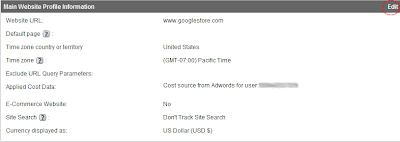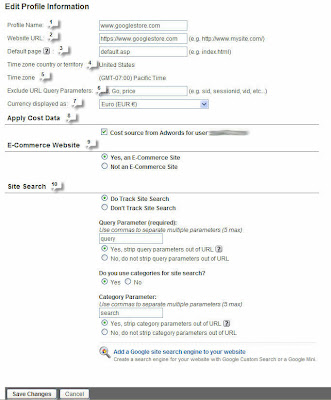A little known link in your Analytics account is the key to unlocking extra ecommerce functionality in your Google Analytics account. In this post, we'll show you how clicking the 'Edit' link in your Main Website Profile Information box can open doors for your AdWords and ecommerce tracking purposes.

Once you click 'Edit' (highlighted in red above), you'll see a screen with editable fields like the image pictured below. The numbered list corresponds to the number next to each field so that you can learn how to set up a profile and enable the right features for your tracking purposes.

- Enter an easily identifiable profile name.
- Fill in the web property URL that you are tracking for this profile.
- Enter the default page to which your server defaults to when no page on the domain is specified. This information allows Google Analytics to combine requests to www.yourdomain.com and www.yourdomain.com/index.html, which are in fact the same page. If Default page isn't specified, these would be reported as two separate pages.
- If your account is linked to an AdWords account, your time zone country and time zone will default to the ones specified in your AdWords account. If your accounts are not linked, you'll see pull-down menus that display options for you to select for #4 and #5.
- Same as #4.
- If your site uses unique session IDs or other query parameters in your URLs that you are not interested in seeing in your reports, you can easily exclude these parameters by entering them into this field.
- Enter the currency you want to see in your reports.
- If you have linked an AdWords account, import your cost data so that you can get AdWords information pumped into your Google Analytics account. Once your cost data is imported, the information will appear in the Clicks tab of your AdWords report. Learn how to import your cost data.
- If you're tracking e-commerce on your website, you must enable it to be reflected in your reports in this section. If you would like to set up e-commerce for your site, please read this Help Center article.
- If you have a search engine on your site, you may want to enable this feature. Site Search contains reports about the visitors using the 'search' functionality on your website. Google Analytics Site Search reports deliver many useful pieces of information - for example, they can help you analyze how people use the search functionality on your site, and report its conversion metrics. Learn how to enable Site Search.
No comments:
Post a Comment